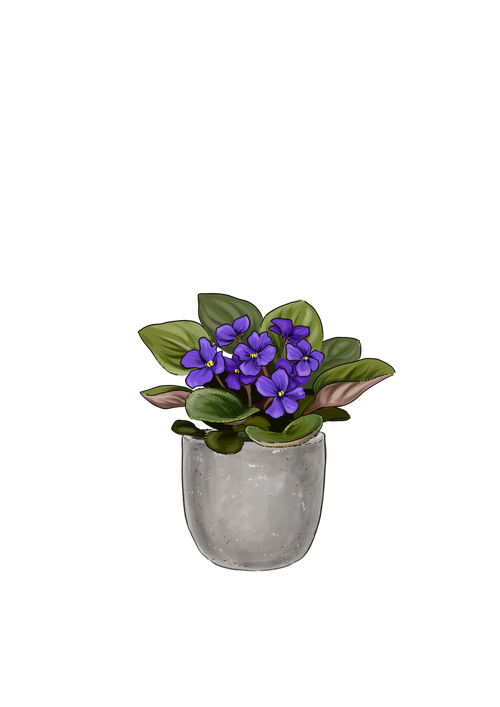Welcome
You have points
Recently viewed
No recently viewed items
Wishlist
Sign in to access your favorites

These plants enjoy bright to moderate indirect light.
Allow the soil to dry out completely between waterings.
These plants enjoy a range of humidity levels. Spritz occasionally.
Keep these plants on the warm side for year-round color. Keep out of drafts or cold temperatures or they will suffer.
Outside: Keep out of direct light as it will burn the leaves. Nightime temperatures need to remain on the warm side for healthy growth.
Apply an African violet liquid fertilizer especially formulated with essential elements and low level soluble salts. Water the soil before application each time.
When receiving the plant, do not repot immediately but wait at least 6-12 months or until the spring. As African violets grow, the older leaves may be removed as newer ones form, leaving a bare stem closer to the soil. Remove your plant from their pot after adequately hydrating them. Remove as much root mass as the bare stem. Replant with fresh soil in the same pot but burying the bare stem, so the bottom leaves are near the soil line. Use an African violet potting mix with vermiculite and perlite, making up 1/3 to 1/2 of the mixture, so it is aerated to help with drainage. Using a terracotta or breathable pot with drainage holes will allow the air to circulate the root system and dry out more quickly. Ceramic pots are usable, too, with drainage holes. Water well and place a large, clear plastic bag over the planter to help create humidity. The roots will re-establish quicker. Check the moisture level each week to ensure they have adequate water. After six weeks, remove the bag and set them in bright to medium indirect light.
Prune any dead or damaged leaves each month. Remove spent flowers to promote new growth. Older, larger leaves can be removed to balance the size of the remaining leaves. If debris is on the leaves, use a small makeup brush to remove off the delicate leaves. Use the cuttings for propagation.
Remove a cutting from the mother plant. Dip the end into rooting power. Poke a hole in damp soil and place the stem. Cover the cutting with a clear, plastic bag and mist. Check soil moisture periodically. Within six weeks, the roots should be getting established. Plantlets will begin to emerge over time forming a new plant. Place in bright to medium, indirect light and follow care instructions.